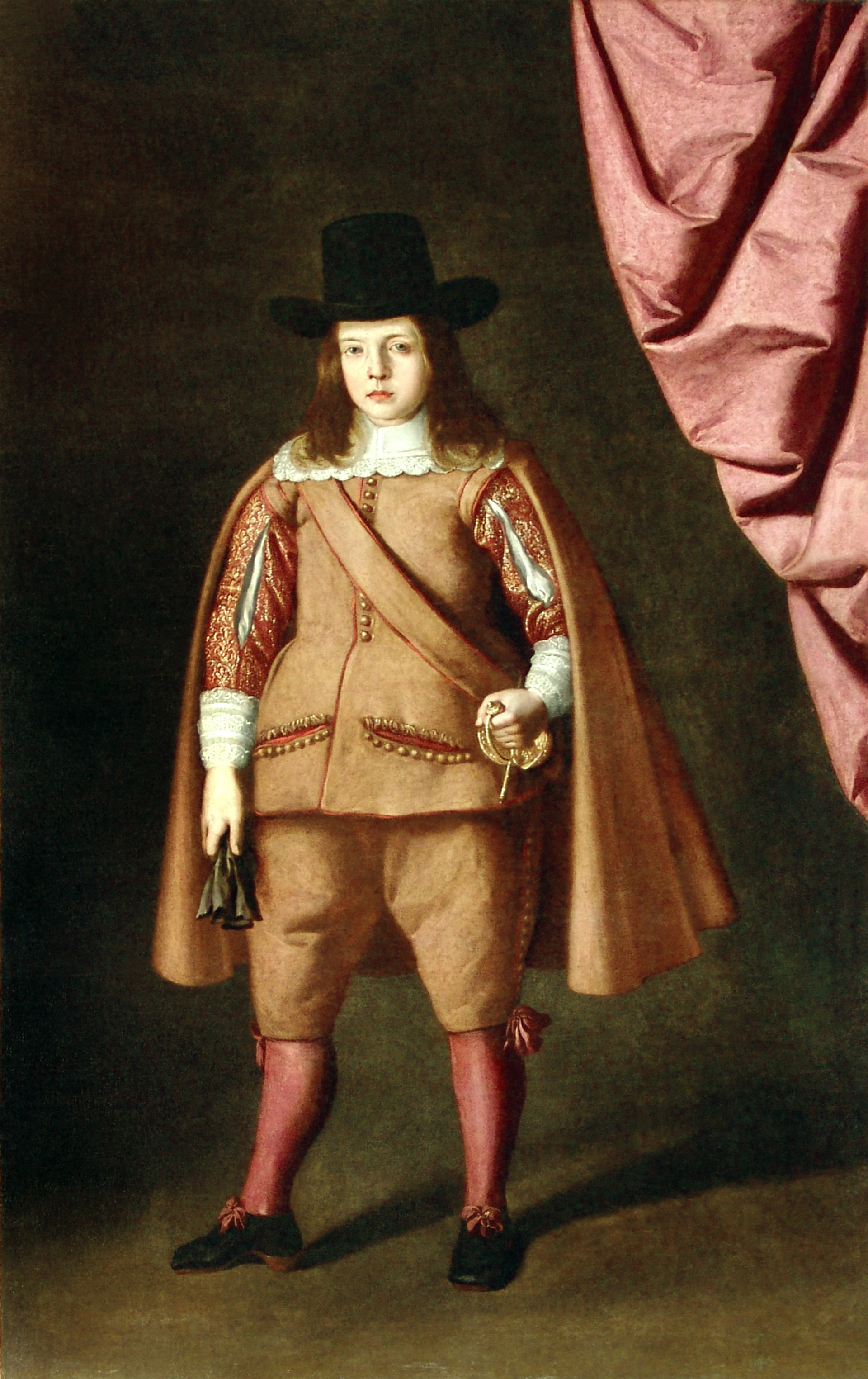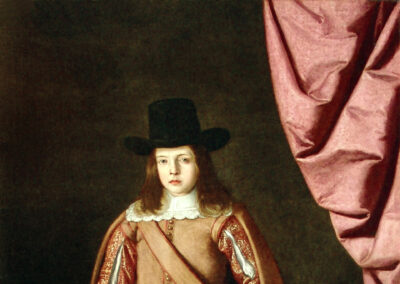It was María Luisa Caturla who, in 1953 at a monographic exhibition on Zurbarán in Granada, first attributed this portrait of a young aristocrat to him and related it to the Marquises of Malagón, for whom the painter had already decorated the altarpiece in the chapel of San Pedro in Seville cathedral, the patronage of this marquisial house by will of Cardinal Tavera, who in turn owned it by donation from the Seville cathedral chapter in 1537. The subsequent addition of the house of Malagón to that of Santisteban and of the latter to that of Medinaceli would explain the presence of the portrait in his collectioni. At the London and Paris exhibitions in 1976, Pérez Sánchez catalogued it as Zurbarán, an attribution that has not been questioned since then, adding it definitively to the small catalogue of portraits of non-ecclesiastical figures by the master of Fuente de Cantos.
The identification of the sitter has been more controversial. As the painting has no inscription or heraldic motif to identify it and no documentary reference has been found so far, the only clues available to identify it are the chronology of its execution and the sitter's clothing.
It has been dated in relation to the portrait of Alonso Verdugo de Albornoz, a portrait signed and dated 1635 in the Dahe Museum in Berlin. The position of both sitters and the outline drawing are similar, but the colour palette is much lighter and the effects of light less contrasted, stylistic variations with which, in the late 1640s, he tried to adapt to the new tastes imposed by Murillo's appearance on the Sevillian market. These dates would fit in well with the clothing of the figure, who wears a bordered walloon typical of the 1640s.
This chronology fits poorly with the genealogical data we have for the house of Malagón and extraordinarily well with the age that the 7th Marquis of Cogolludo, born in 1637, would have reached towards the end of 1640. The future "prime minister" of Charles II was the son of the 7th Duke of Medinaceli and the Marchioness of Alcalá de la Alameda, who, in 1639, would inherit the house of Alcalá de los Gazules from her cousin. If this were the case, given that his mother died in 1645, Zurbarán would be painting the Duke of Alcalá, one of the most conspicuous titles of the Sevillian nobility. Antonio Sanchez González and Enrique Pareja, in the catalogue of the 1999 exhibition in Granada, identify him with too much certainty as this aristocrat, an attribution we agree with for lack of a better alternative, but we should not overlook Alfonso Pérez Sánchez's indication that the black hat points to Holland.


